When learning, people tend to remember only 10% of what they read and 20% of what they hear. However, after introducing gamification, this figure goes up to 90%.
Playing video games is fun and stimulating, and no one has to make you do it. Imagine if you can transmit the same enthusiasm into all your endeavors. Gamification aims to achieve this, or at least make living more interesting as we work to achieve our daily and life goals.
This article will help you answer most of the fundamental questions about gamification. You can look at the concept inside-out and imagine a potential place to implement it in the things you do.
Key Points
- One study reveals that the most commonly used video game elements in the gamification of science education are competition, leaderboards, levels, and points.
- The purpose of a gamification process is defined by the outcome we want to achieve.
- When creating a video game or implementing gamification you should think about the different gamer types and what stimulate them in video games.
- To start thinking about a gamification strategy consider exploring the MDA framework – often used in game design.
- Duolingo uses video game elements like challenges, levels, and character customization to make language learning exciting and more rewarding.
- A review of 91 quantitative studies on the effects of gamification on learning shows that 71.43 % had a positive outcome.
Gamification, a Simple Definition
The Merriam-Webster dictionary defines gamification as “the process of adding games or gamelike elements to something (such as a task) so as to encourage participation.”
We can split this definition into two points. The first point defines gamification as the process of adding gamelike elements to something that is not a game. The second point maintains that the purpose of this practice is to encourage participation.
However, like most definitions, this one offers a limited perspective on the rich potential of gamification applications.
Yes, gamification is the identification and use of video game elements. And then the application of such features to challenging tasks or content to make it engaging or fun.
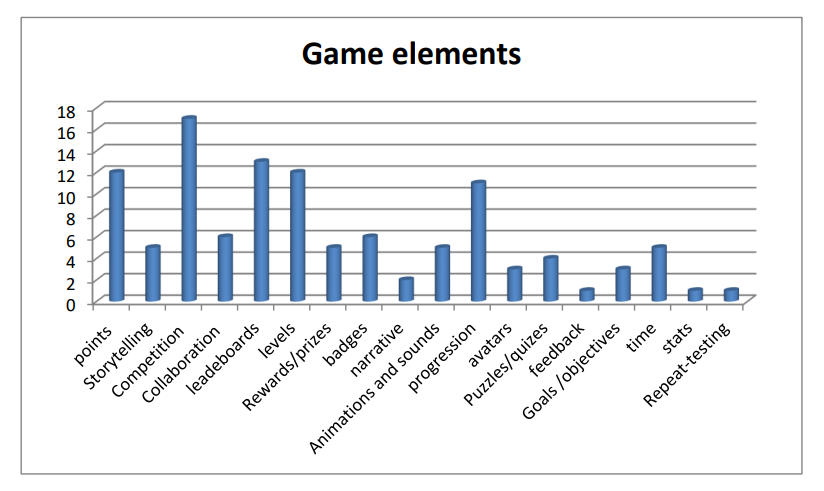
Figure 1. Showing the percentage of video game elements used in 24 examples of gamification applications in science education. (Source: Kalogiannakis, Papadakis, and Zourmpakis, 2021)
But, the “something” in this definition can be any content, task, or service that a person can interact with. This is why it is hard to imagine the full potential gamification can bring you by reading just a single definition.
If your thirst for knowledge seeks more information, read further. You will discover the full power of gamification through its key concepts, examples, and current research.
The Purpose of Gamification Use
The term gamification originated in 2008 and came to be widely used in 2010. However, before the term became famous, others were used, and are still used, to describe the same process. Among them are productivity games, surveillance entertainment, funware, playful design, behavioral games, game layer, and applied gaming.
Most of the terms listed above describe a process that uses fun as the main source of innovation. Then we can say that the main purpose of gamification is to make a thing or process fun.
Even though most people associate gamification as a tool that makes education fun, this is not its only application. Using elements from video games to enhance participation or engagement with content opens a sea of opportunities. That is why we cannot define gamification as strictly used for education.
Because it can be applied in different fields, we have to define the purpose of gamification in relation to its application. If it is education, the aim is to use video game elements to stimulate engagement with educational content.
But if you are interested in how gamification impacts the work environment, its purpose can be defined in different terms. For instance, some describe it as being expressed by an increase in the adoption of management tools, employee retention, growth in employee knowledge sharing, or improved call center satisfaction and performance.
Therefore, when we want to define the purpose of a gamification process, we should also consider the outcomes we want. Defining the goal like this will tell us if the fun elements we used were applied successfully – or if we need to adapt and change our approach.
Types of Gamers
Besides setting a goal for the gamification process, we also have to consider the people to whom we are offering this solution. The wrong approach is to view all the players as having equal interests and playing styles. On the contrary, there are many different player types. One of the first classifications of video game player types was presented by Bartel in 1996. He described achiever, explorer, killer, and socializer as the main gamer types.
Besides the player types, various motivators entice people to play video games. For instance, Yee (2006) looked at data collected from 3000 MMORPG players and identified eight motivators. They are advancement, mechanics, competition, socializing, relationship, teamwork, discovery, role-playing, customization, and escapism.
Not to complicate things too much, among the many different classifications of gamer types, the following hexad scale offers good insight into the psychology and motivation of various players. The information can help you imagine what game elements certain players appreciate during gamification.
Player Type | What the Player Likes in Games | Game Types They Prefer |
Disruptor |
|
|
Free Spirit |
|
|
Achiever |
|
|
Collector |
|
|
Socializer |
|
|
Philanthropist |
|
|
Table 1. Shows the different player types and the content they like in video games.
Gamer types are an essential aspect of any game design, which is also true for gamification. It is farfetched to presume that you can create a game that ticks all the boxes and will become universally liked. However, the hexad scale also shows us that many game types appeal to several categories of players.
The important point to remember here is that video game elements are not all equally appreciated by players. Always consider this fact when implementing gamification.
What is a Gamification Strategy?
You have the basic concept of gamification down. Also, you get how to define the purpose of gamification, and you concluded that not all gamers are the same. Now, you may think that you like this concept and want to apply it to your content or work. But how? How do you gamify something?
In short, a gamification strategy is the planning and execution process that uses video game elements to enhance existing processes or content. When you choose to gamify something, you have to figure out how to coordinate this process and what features to include in it. In essence, gamification is similar to game development. The difference is in the fact you do not always have to create a video game as a result of gamification, you can just use certain elements from video games.
Gamification often requires several experts working together to make a good and functional solution. Developing a gamification strategy outlays a plan and, in the process, makes you consider logistical and game design aspects of the process. To this aim we will share one framework that can help you consider the various elements that go into game development, that is, gamification.
The MDA framework was expanded by Ruhi in 2015 by analyzing three examples of gamification. Based on these findings, we can say that a gamification strategy should consider mechanics, dynamics, and aesthetics. Besides this, the author defined 20 concepts that fall under the three main strategy steps. It is worth noting that the MDA framework is widely used for game development and naturally became an aspect of gamification.
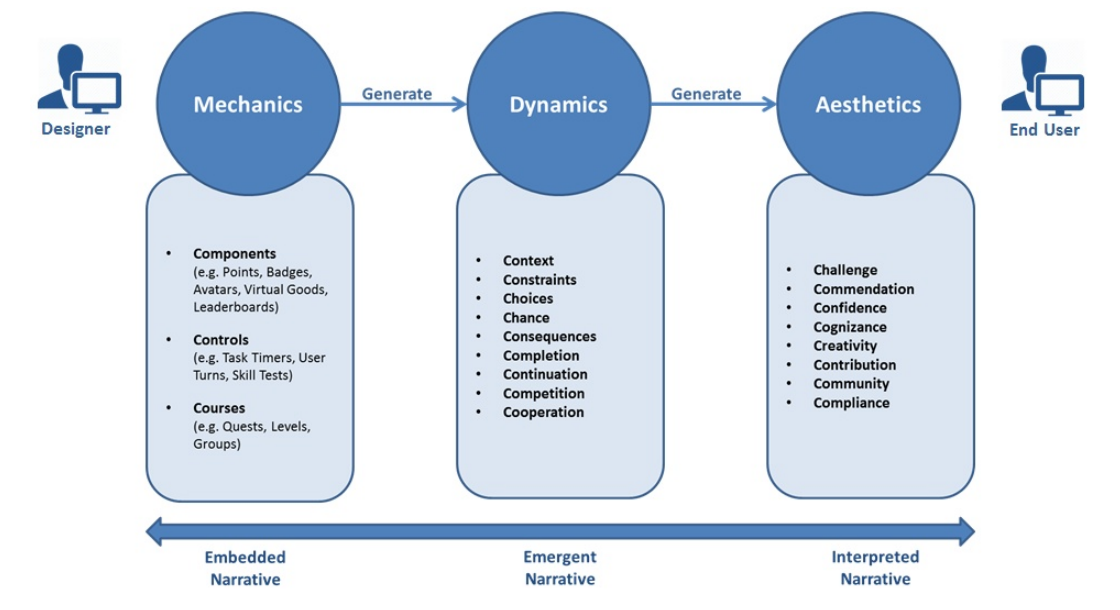
Figure 2. Shows Runi’s (2015) model for developing a gamification strategy with the 20 concepts that constitute the three main steps.
The described model shows us that we should consider three main areas of gamification. The 20 Cs are more illustrating for actual game design because they constitute the game’s look.
Concepts under the category of mechanics determine the core features of the game – its objects and leader boards, the control mechanics, questlines, and leveling. Then adding to this level come the dynamic elements. They are the features that define the gameplay and stimulate the player to continue exploring and competing. The last layer is the game’s interaction with the user. This segment of the framework considers how the user can contribute to the game’s outcome and how deeply they can immerse in the game.
The last aspect of the MDA framework is the narrative aspect. This layer is crucial because it ties in all the areas of game design and creates an interactable tool. When doing gamification, the narrative design is vital for your strategy. You have to create a narrative that is relevant to the purpose of the project and, at the same time, fun and stimulating.
The model described by Runi is a good start when considering a gamification strategy. You should also consider exploring case studies. And most importantly, work with your team to figure out how the various pieces of the gamification you imagined fit together. Regardless of the actual plan you make, all the above layers of a gamification strategy will be considered at one point.
An Example of Gamification
Duolingo is a famous example of gamification, with over 500 million registered users worldwide and a revenue of US$ 161 million in 2020. Since it is so well known, it is the best example to consider in this short case study.
Duolingo is a mobile app that helps you learn a new language, and it does this through the implementation of gamification.
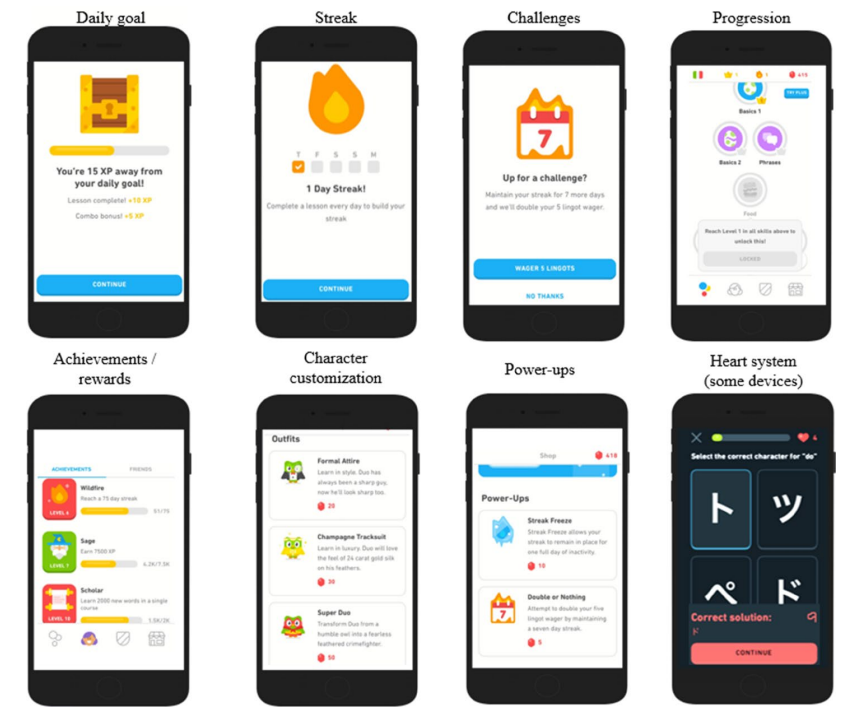
Figure 3. Shows all the gamification elements that are used in Duolingo. (Source: Shortt et al., 2021)
The systematic literature review done by Shortt et al. (2021) shows that research on Duolingo and its effectiveness as a language learning tool identified both good and bad features.
Duolingo Gamification Pros
- It has an interactable and engaging gamified nature
- “Chunked” presentation of information
- It is flexible for use
- Easy to access
- The use of badges and streaks was linked with higher motivation
- Leaderboards gave a sense of a standard progression path
- Feedback on mistakes and user progress was considered a good feature
Duolingo Gamification Cons
- Some users found the use of a mobile app as a language learning tool too distracting
- The tasks are too repetitive and depend on the mastery of the same skills
- The lack of grammatical explanation limits the quality of feedback
- Confusion with determining the actual level of language mastery through progression in the app
- Some users stop using the app because of its repetitiveness
- Advanced users find the app less interesting than beginners
We cannot expect one gamification solution to be good at addressing all potential areas of language learning. Duolingo shows that elements from video games like challenges, levels, and character customization help make language learning exciting and more rewarding.
Duolingo demonstrates the strengths of gamification to transform a familiar process and make it more accessible and fun. There are other case studies worth considering, but at the moment, this is enough to demonstrate the application of gamification in a practical example.
What are the Benefits of Gamification?
Determining the benefits of gamification depends on the purpose of its use. Examples will illustrate this best.
For instance, the Smithsonian Science Education Center identifies the following benefits of gamification.
- It aids in the cognitive development of adolescents
- Sometimes it can also assist in physical development
- It increases engagement in the classroom
- Gamification can help with accessibility in the classroom
- And gamification is not limited to the school.
When considering gamification for education, we can identify the benefits mentioned above in most examples. Point number five is illuminating, especially now when education is moving away from the classroom and becoming more available through the internet.
Studies also show the results of gamification in education and learning are not just fun. They also have positive, measurable outcomes. A review of 91 quantitative studies on the effects of gamification on learning shows the following results:
Mainly Positively Oriented | Null or equal positive and negative | Mainly negatively oriented | Total | |
Number of papers | 65 71,43 % | 23 25,27 % | 3 0,03 % | 91 100 % |
Table 2. Shows Majuri, Koivisto, and Hamari’s (2018) literature review results.
Gamification can also be used in marketing and customer engagement. Moosejaw is a clothing company that implemented a gamified system and found that 76% of its revenue came from gamified activities. In total, the company experienced a 560% ROI from its gamified system.
Some would say that the main benefit of gamification is its ability to increase engagement. When a person is engaged with the thing they are doing, they tend to be more attentive and interested. This may not always translate into getting better, but it makes us more absorbed in doing something and, therefore, happier when we do it.
Gamification should always cause a higher level of interest in the users than conventional education methods, customer service, etc. But when we define the goals of our gamification process, we should be more precise in determining all the benefits we want to achieve. This will help us monitor the implemented gamification’s effectiveness and tell us how to adapt it.
Market Trends and Popularity of Gamification
The gamification market value rose from US$ 4.9 billion to 11.9 billion in 2021. It is expected to grow 30% by 2024. The global sales estimate for gamification in 2025 is expected to reach US$ 32 billion. A post by Review 42 claims that 95% of employees claim they enjoyed using game-inspired elements in their work. Furthermore, 70% of the top 2000 global companies use gamification, in some form, in their processes.
If we consider research on tailored gamification, we can also notice a trend. A study done by Klock et al. (2020) shows the distribution of recent studies about gamification.
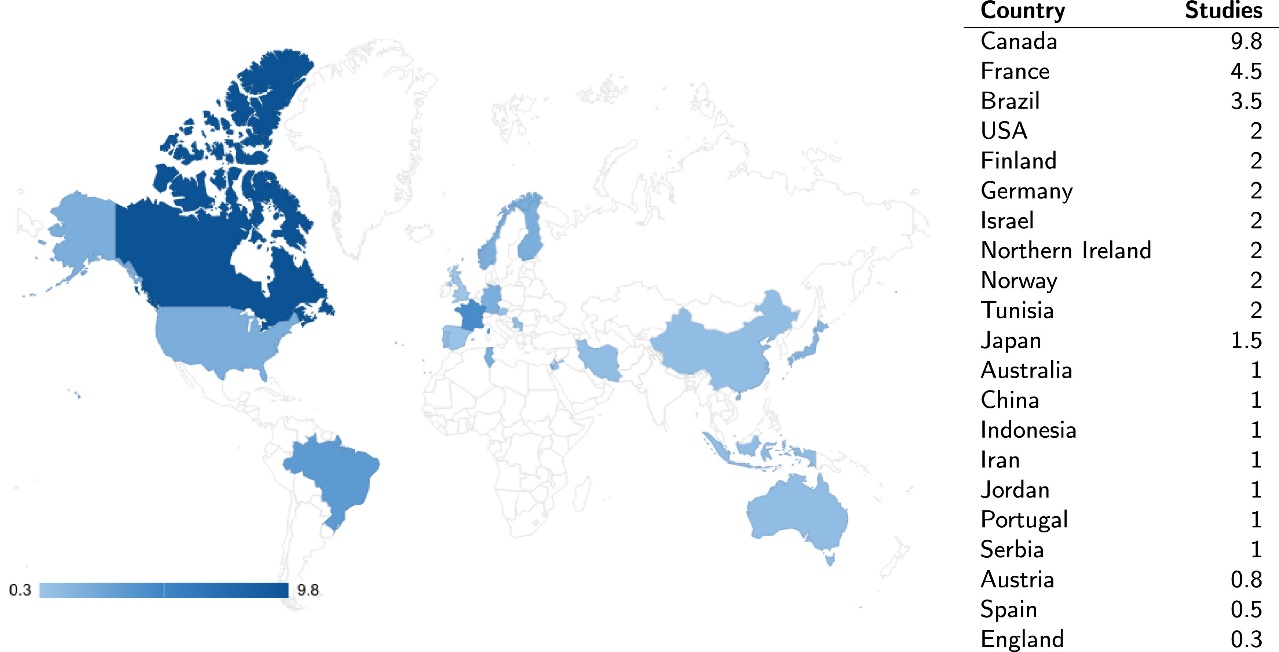
Figure 4. Shows the publication of research linked with tailored gamification between 2015 and 2017, based on the author’s affiliation country.
Canada, France, and Brazil were the leaders in tailored gamification research. However, figure 4 also shows that the implementation of gamification is not evenly distributed throughout the world.
At the moment, all the projections for the implementation of gamification point upward. However, the question remains, will it become a global trend that will drastically disrupt and change our daily lives? We won’t make any bold statements now, but the point is clear that gamification is here and will continue to be widely implemented in the foreseeable future.
Looking Forward
Gamification is a process of implementing video game elements to any none game content or operation. This opens a broad scope of possibilities, and in this article, you saw some of the potential implementations of gamification. Even though education stands out as the prominent field of implementation, other avenues are also being explored.
Creating a gamified solution for your company, school, and website is now readily available and reachable. Companies are offering gamification as a solution through software and app applications. If you are considering updating your system and making it more in line with the current trends, consider exploring gamification as an option. The team at Minerva Studio will help you determine the best strategy for implementing gamification in your particular field of interest.
